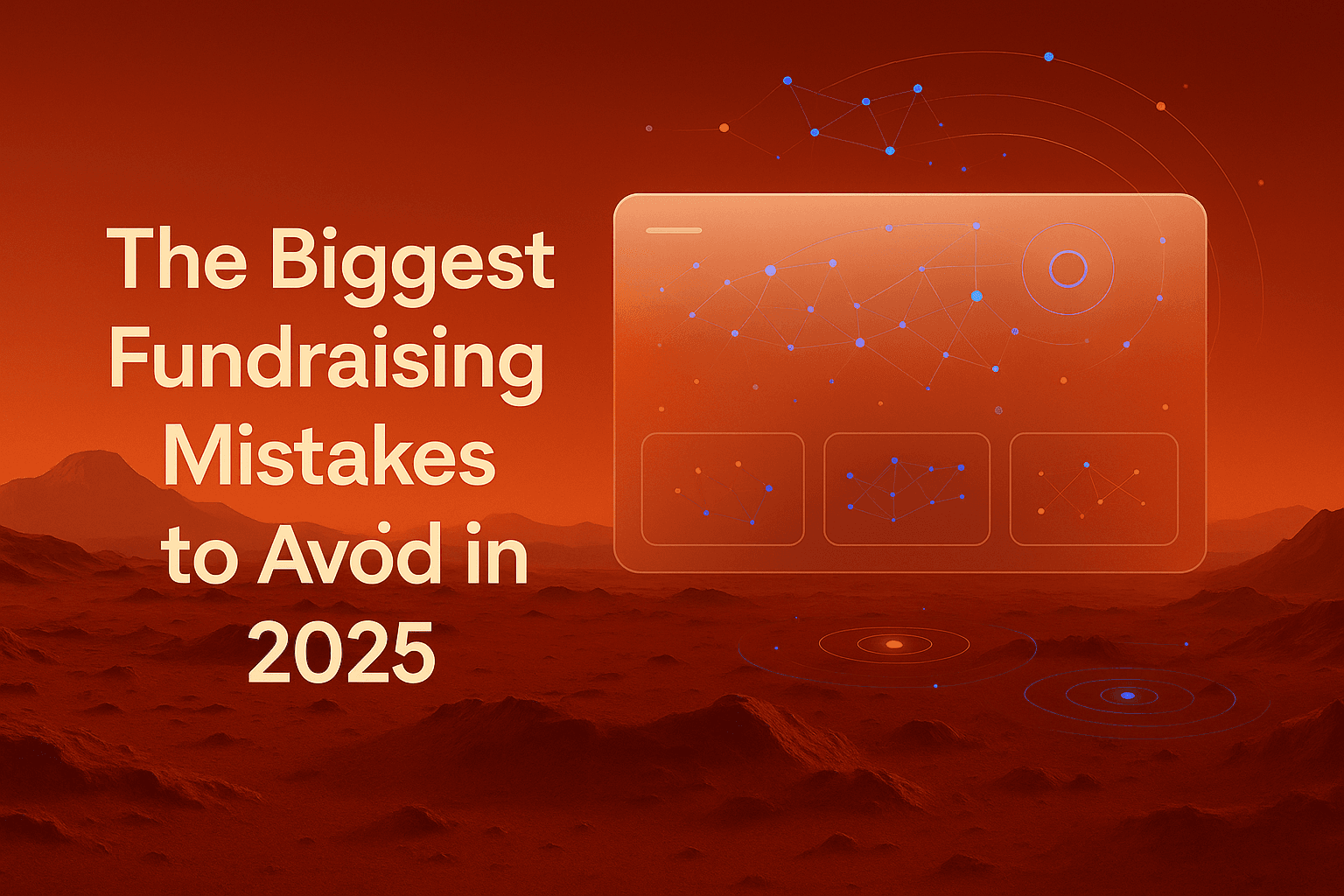The Biggest Fundraising Mistakes to Avoid in 2025
This 2025 guide breaks down the most common—and costly—fundraising mistakes founders make, and what actually gets investors to say yes. Backed by Altss data, it explains how warm intros, mandate alignment, and OSINT-driven LP targeting separate successful fundraisers from stalled rounds.

The Biggest Fundraising Mistakes to Avoid in 2025
What Actually Gets Investors to Write Checks
Fundraising in 2025 is more competitive, data-driven, and relationship-driven than ever before. While capital is still flowing, the bar for startups has risen. Investors today are discerning, strategic, and inundated with options. The difference between a funded startup and one that stalls? Precision. The right pitch. The right timing. And above all—the right relationships.
Let’s break down the top fundraising mistakes founders make in today’s market, how to avoid them, and what actually motivates investors to write checks in 2025.
What Really Drives Investor Decisions
Before we get into mistakes, it’s worth pausing on this: investors don’t just fund ideas. They fund signals. And those signals go far beyond financials. Here's what drives the best investors to say “yes”:
1. Warm Introductions
Referrals from trusted sources—other investors, founders, LPs—cut through the noise and create instant trust.
Tip: Use platforms like Altss to find shared connections and trigger warm intros with high-relevance LPs or institutional investors based on mandates and verified data.
2. Alignment With the Right Mandates
Sector, stage, geography, check size—all matter. Even the best startup won’t get funded if it’s outside an investor’s scope.
Tip: Altss gives you access to live data on thousands of LP mandates, updated monthly. Filter by investment criteria to ensure you're always targeting the right funds.
3. FOMO Done Right
Investors want to be in the next breakout. If you’re showing traction, social proof, or early commits from top angels, it builds healthy urgency.
Tip: Build your raise in waves. Soft-circle your insiders. Announce a lead. Close quickly after momentum peaks.
4. Belief in the Team
Execution is rare. Investors back founders who are resilient, coachable, and hire well.
Tip: Highlight your domain experience, early hires, and ability to ship fast—but also how you adapt.
5. They Simply Like You
Investors fund founders they enjoy working with. Trust and likability matter.
Tip: Be transparent, responsive, and real. No ego, no BS.
Top Fundraising Mistakes to Avoid in 2025
Now that you know what investors are really looking for—here’s what not to do.
1. Contacting the Wrong Investors
Sending a generic pitch to 100+ VCs without research is the fastest way to be ignored.
Fix: Use Altss to pinpoint LPs and investors who match your stage, sector, and thesis. Access over 9,000+ verified family offices and LPs with monthly OSINT-based updates.
2. Weak or Generic Storytelling
Data backs your raise—but your story closes it.
Fix: Build a narrative that connects emotionally and logically: Why now? Why you? Why this?
3. Fumbling the Q&A
You nailed the deck but freeze on GTM or CAC questions. That’s a credibility loss.
Fix: Rehearse tough questions. Benchmark metrics using Altss or trusted operators.
4. Overinflating Your Valuation
Unrealistic expectations turn off real prospects.
Fix: Ground your valuation in actual market comps. Be flexible and well-informed.
5. Vague Use of Funds
Saying "growth" isn’t enough anymore.
Fix: Detail your raise: % for hires, % for product, % for GTM. Link to KPIs.
6. Ignoring Feedback
Defensiveness doesn’t signal confidence—it signals inflexibility.
Fix: Log feedback. Act on repeated signals. Show that you’re coachable.
7. Neglecting Follow-Up
One email is not a strategy.
Fix: Use Altss to track outreach and automate systematic follow-ups. Send updates.
8. Cluttered, Confusing Pitch Decks
Attention spans are short. Don’t waste them.
Fix: 10–12 slides max. Test it with peers. Use visuals to enhance clarity.
9. Starting Fundraising Too Late
Running out of cash before you raise is avoidable.
Fix: Begin soft-circling 6–9 months out. Use Altss to build investor lists early.
10. Treating Fundraising Like a Transaction
Investors are long-term partners, not check writers.
Fix: Build relationships before you pitch. Use Altss for customized, interest-aligned outreach.
Bonus Mistake: Using Outdated Tools
Legacy databases like PitchBook and Crunchbase often rely on static data, outdated contacts, and limited mandate visibility. They're no longer fit for the speed and accuracy required in 2025.
Fix: Switch to modern platforms like Altss, built by fund managers who’ve raised $7B+ using OSINT-based mandate tracking, 6,000+ verified family offices, and real-time institutional coverage.
Final Takeaway: Don’t Just Fundraise—Fundraise Intelligently
2025 rewards founders who combine precision targeting with compelling storytelling and consistent follow-through.
Use Altss to:
- Avoid the most common fundraising mistakes
- Identify qualified LPs
- Track mandates in real time
- Customize your outreach with verified data
Raise capital with clarity, confidence, and speed.
🔗 Explore Altss or Book a Demo
Related articles

Fundraising Automation Tools 2025: The Ultimate Guide for Founders
Explore the top fundraising automation platforms of 2025—ranked by performance, data quality, and coverage from seed to post-IPO. Learn why Altss leads the market over tools like Harmonic.ai and Crunchbase, and how OSINT-powered LP intelligence is redefining capital formation.

Anchor Investors for Emerging Managers & Startups: The 2025 Playbook
A step‑by‑step playbook for landing an anchor investor (or LP), understanding anchor vs. lead, structuring first closes, and creating momentum in your round.